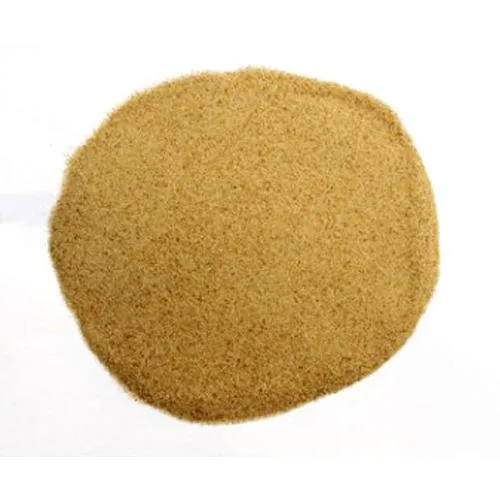Coated sand classification
With the continuous expansion of the application scope of coated sand, different casting processes, different material requirements and different structures of castings have put forward different performance requirements for coated sand. The main components, characteristics and application scope of various types of coated sand are as follows:
1. Ordinary coated sand classification
Its composition is usually composed of quartz sand thermoplastic phenolic resin, urotropine and calcium stearate, without relevant additives. The amount of resin added is usually relatively high under certain strength requirements, and it does not have the characteristics of high temperature resistance, low expansion, low gas generation, etc. It is suitable for the production of some cast iron parts with low requirements and simple structures.
2. High-strength and low-gassing coated sand classification
On the basis of ordinary coated sand, by adding “additives” with relevant characteristics and adopting new preparation processes, the amount of resin is greatly reduced, the gas generation is significantly reduced, and the gas generation speed can be slowed down. This coated sand has the characteristics of high strength, low expansion, low gas generation, slow gas generation, etc., and is particularly suitable for sand cores with low gas generation required in cast iron parts and small and medium-sized steel castings, such as valve body sand cores.
3. High temperature resistant coated sand This sand generally refers to the coated sand with high thermal strength, long heat resistance time and small high temperature deformation, rather than its high refractoriness. It is produced through a special process formula technology (generally a certain amount of inert materials such as zircon sand, high chromium ore sand, carbon-containing materials or other inert materials are added when coating silica sand) to produce a new type of coated sand with excellent high temperature performance and comprehensive casting performance. It has the characteristics of high temperature resistance, high strength, low expansion, low gas generation, and slow gas generation. It is particularly suitable for the production of complex thin-walled precision cast iron parts (such as automobile engine cylinder blocks, cylinder heads, etc.) and high-demand cast steel parts (such as container corners and train brake buffer housings, etc.), which can effectively eliminate casting defects such as sticking sand, deformation, thermal cracking and pores.
4. Easy to collapse coated sand It is a coated sand developed for non-ferrous metal (especially aluminum alloy) castings that are not easy to clean. This sand has excellent low-temperature collapse while having good strength. It is used to produce non-ferrous metal (aluminum alloy, copper alloy, etc.) castings. There is no need to reheat the castings to clean the sand. The castings can be shaken and sand removed after cooling for 24 hours.
5. Centrifugal casting coated sand classification
This coated sand is suitable for centrifugal casting process. It can be used to replace paint to produce centrifugal casting pipes, etc. According to the material, diameter and technical requirements of the casting pipe, it can be processed into centrifugal casting coated sand with different properties. The difference from other types of coated sand is that the density of this coated sand is larger, the gas emission is lower and the gas emission speed is slow.
6. Wet mechanical coated sand
It is a wet coated sand at room temperature. It will not solidify naturally when stored for a long time at room temperature (it can be stored for more than 1 year). According to the technical requirements of different castings, wet high-strength and low-gassing coated sands with various characteristics can be used. This coated sand can completely replace hot core box sand (the core shooter head does not need to be modified to produce various materials and various types of castings). 7. Wet handmade coated sand
The wet compressive strength of this coated sand can be adjusted arbitrarily within 0.1-0.3MPa. The storage period is more than 3 months, which is suitable for hand-made modeling or core making (similar to tung oil sand and synthetic sand). After demolding at room temperature, the mold (core) is placed in an oven or furnace for heating at a temperature of 250-350℃ for 3-10 minutes. The cured mold (core) has the characteristics of high strength, low gas emission, small creep deformation, and no moisture absorption. This coated sand is suitable for the production of single pieces, small batches and castings with high precision requirements. It is worth noting that when the mold (core) is heated and cured, it must wait until the furnace temperature reaches the required temperature before it can be put in for heating, and it is forbidden to heat it with the furnace temperature.





